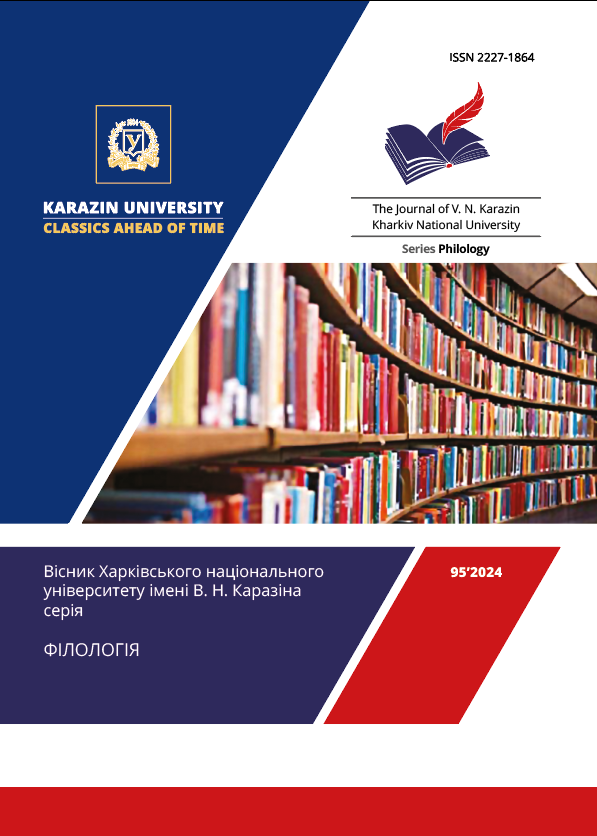Можливі взаємозв’язки праслов’янського концепту «дурень» із ритуалом ініціації та чарівними казками
Анотація
Метою низки публікацій, другою з яких є ця стаття, є дослідження феномену концептуальної пам’яті як різновиду колективної пам’яті й пам’яті культури та способу акумулювання важливих сенсів.
Теорія концептуальної пам’яті перегукується з лінгвістичною теорією етимологічної (або культурної) пам’яті слова, яка зосереджується на зв’язках етимологічних та історичних проєкцій мовної одиниці з її сучасною семантикою. Як видається, такі саме зв’язки можна побачити між первісними й давніми значеннями слів і тими концептами, які ними вербалізуються в подальшому, прослідкувати, як само мова й культура зберігають універсальні та самобутні смисли.
Задля ілюстрації теорії концептуальної пам’яті демонструються взаємозв’язки гіпотетичного праслов’янського концепту «дурень», який реконструйовано у попередній роботі, із ритуалом ініціації та чарівними казками. За нашою гіпотезою, стародавній концепт «дурень» відбиває особливості ритуалу посвячення та номінує самого ініціанта. Про це свідчать збіги ядерних і периферійних концептуальних смислів із ключовими моментами обряду ініціації. У подальшому обряд фіксується в ініціальних мітах і в інших текстах культури, наприклад чарівних казках.
У нових соціальних реаліях казка поступово втрачає розуміння магічних сенсів ритуалу та відображає спрощену й переосмислену розповідь про ініціацію, у якій концепт «дурень» корелює, перш за все, з відповідним персонажем. Концептуальні смисли поступово набувають вигляд набору рис головного казкового героя, а «казковий фон», що відбиває особливості первісного ритуалу, перестає сприйматися як той, що має відношення до концепту.
Завантаження
Посилання
boys die after manhood ceremony in South Africa. URL: https://ua.korrespondent.net/world/3389056-pislia-tseremonii-posviaty-v-choloviky-v-par-pomerly-26-khlopchykiv (date of application: 10.06.2024) [in Ukranian].
Apresyan, Yu. D. (1995). Selected works (Volume II). Integral description of the language and systematic lexicography. Moscow: Languages of Russian Culture [in Russian].
Balushok, V. G. (1993). Initiations of the ancient Slavs (an attempt at reconstruction). Ethnographic Review, 4, 57–66 URL: https://esu.com.ua/article-12303 (date of application: 08.06.2024) [in Russian].
Balushok, V. H. (1998). Rites of initiation of Ukrainians and ancient Slavs. Lviv–New York [in Ukranian].
Balushok, V. H. (2011). Initiations. Encyclopedia of Modern Ukraine. Kyiv: Institute of Encyclopaedic Research of the National Academy of Sciences of Ukraine [in Ukranian].
Danylenko, L. (2020). Ukrainian confusion and its reception in Slavic languages (on the origin of the phraseology to confuse). Slavia Orientalis. T. LXIX, NR 2, 319–335. DOI: https://doi.org/10.24425/slo.2020.133664 [in Ukranian].
Danylenko, L. I. (2017). Cultural memory of the word: a textbook. Kyiv: Dmytro Burago Publishing House [in Czech].
Davydiuk, V. F. (2005). Primitive mythology of Ukrainian folklore. Lutsk: Volyn regional printing house [in Ukranian].
Fraser, D. D. (1983). The Golden Branch: A Study of Magic and Religion. Moscow: Political Literature Publishing House [in Russian].
Geishtor, A. (2024). Slavic mythology. Kyiv: Clio [in Ukranian].
Heisinga, J. (1994). Homo Ludens. Kyiv: Basics [in Ukranian].
Hubernachuk, S. S. (2010). The antiquity of the Ukrainian language. Kyiv: Fourth Wave [in Ukranian].
Koleva-Zlateva, J. (2013). Etymological memory as an auxiliary criterion in etymological experience (Notes on the semantic reconstruction of the named right side dating back to indo-e. *deks). Slavika – Slavika, XLII, 149–163. Debrecen [in Russian].
Lyubimova, S. (2017). Etymological Memory of a Word in Designating Sociocultural Stereotype. East European Journal of Psycholinguistics. 4 (1), 140–149. DOI: https://doi.org/10.5281/zenodo.821718 [in English].
Masliy, E. V. (2005). Some typological features of the image of Holy fool and their realisation in Russian folk tales. Visnyk of V. N. Karazin Kharkiv National University. Series: Philology, issue 46, 116–120 [in Russian].
Masliy, O. V. (2022). Reconstruction of the figurative component and structure of the concept of fool according to the Proto-Slavic vocabulary. Visnyk of V. N. Karazin Kharkiv National University. Series: Philology, issue 91, 86–91 DOI: https://doi.org/10.26565/2227-1864-2022-91 [in Ukranian].
Nevermann, H. (1933). Masken und Geheimbünde in Mélanésien. Berlin [in German].
Propp, V. Ya. (1928). Morphology of the fairy tale. Leningrad: Academia [in Russian].
Propp, V. Ya. (1986). Historical roots of the magic fairy tale. Leningrad: Leningrad University Publishing House [in Russian].
Shapar, V. B. (2007). Initiation. Modern explanatory psychological dictionary. Kharkiv: Flag [in Ukranian].
Sizonov, D. Y. (2022). Phraseologism and cultural memory: system of correlations in the media. Culture of the word, 96, 82–92. DOI: https://doi.org/10.37919/0201-419X.2022.96.6 [in Ukranian].
Telia, V. N. (1996). Russian phraseology. Semantic, pragmatic and linguocultural aspects. Moscow: Languages of Russian Culture [in Russian].
Temchenko, A. I. (2015). Traditional mantic practices: archaic sign system. Cherkasy: IntroligaTOР [in Ukranian].
Trubachev, O. N. (edit.) (1978). Etymological Dictionary of Slavic Languages (Proto-Slavic lexical fund). (Issue 5 (*dělo – *dьržьlь)). Moscow: Science [in Russian].
Veremchuk, E. (2020). Etymological motivation of verbalisers of the English ethical category duty / obligation. Lviv Philological Journal, 8, P. 34–39. DOI: https://doi.org/10.32447/2663-340X-2020-8.5 [in Ukranian].
Webster, H. (1908). Primitive secret societies. New York [in English].
Yakovleva, E. S. (1999). On the notion of ‘cultural memory’ as applied to the semantics of a word. Questions of linguistics, 3, 92–107 [in Russian].




